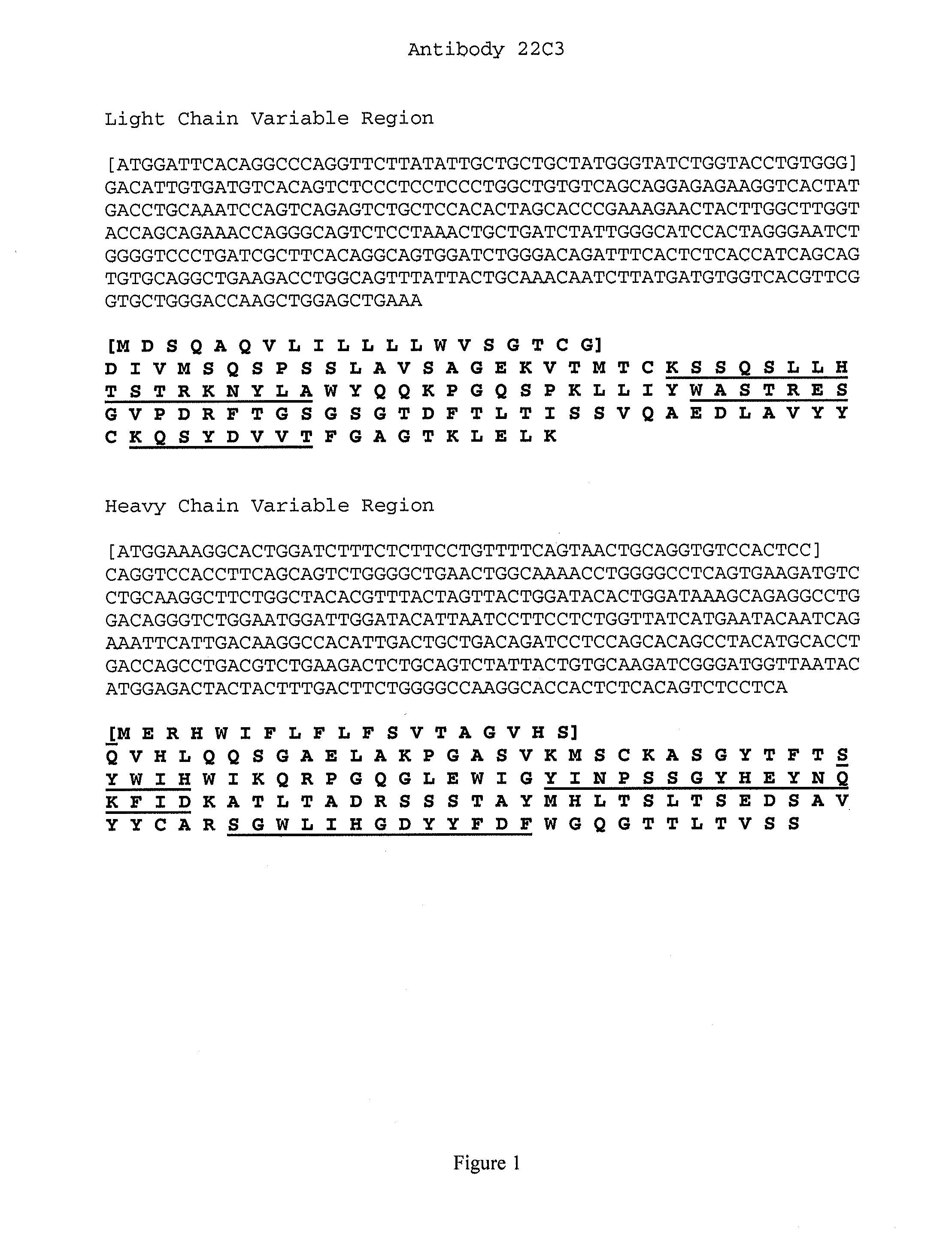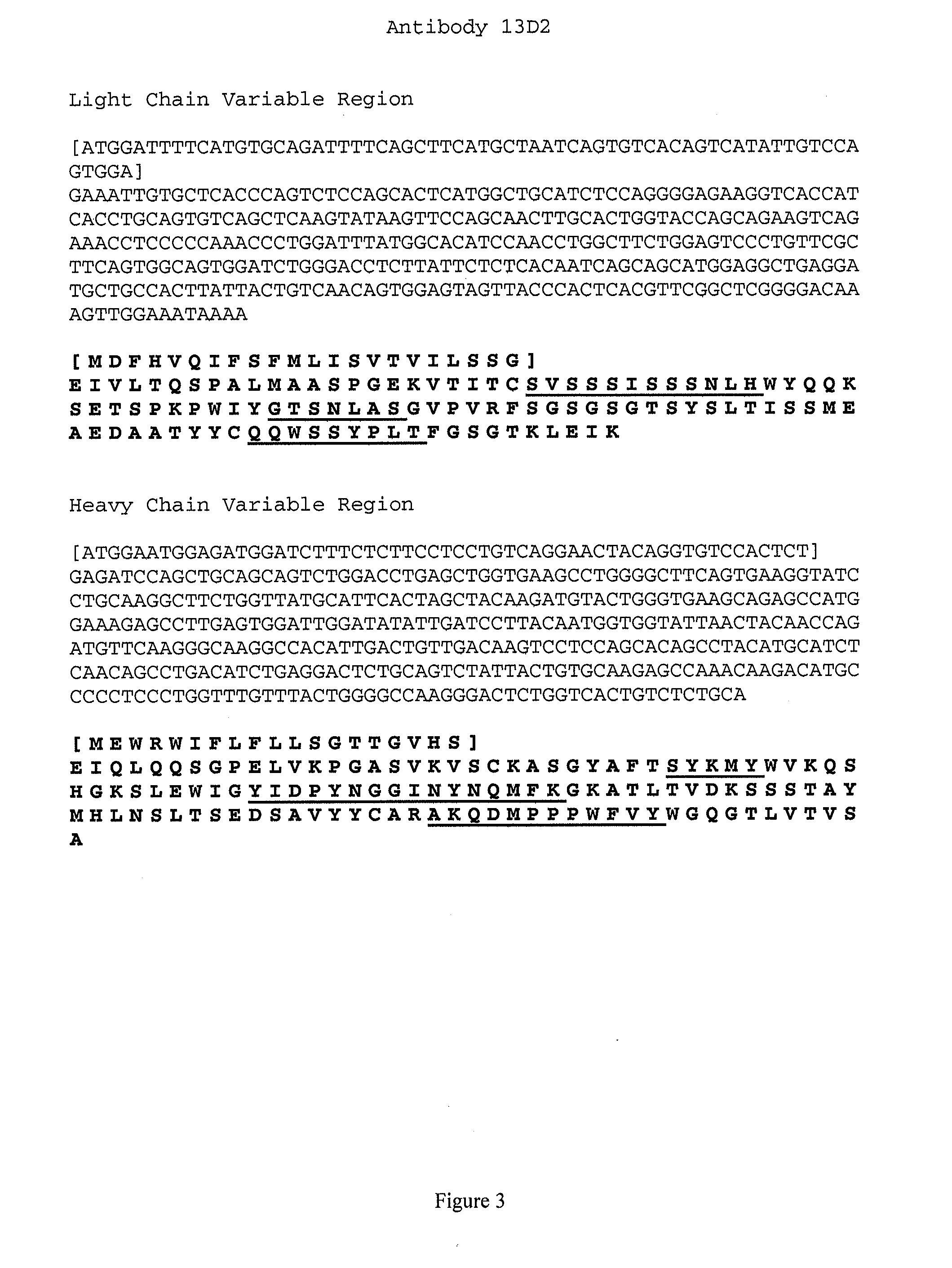Immunoassay for soluble PD-l1
a technology of immunoassay and soluble pd-l1, which is applied in the field of biomarkers expressed by cancer cells, can solve the problems of significant number of patients failing to exhibit an anti-tumor respons
- Summary
- Abstract
- Description
- Claims
- Application Information
AI Technical Summary
Benefits of technology
Problems solved by technology
Method used
Image
Examples
example 1
Identification of Matched Capture and Detector Antibody Pairs
[0141]The inventors undertook a screening process to identify matched capture and detector pairs of antibodies for use in a quantitative ECL immunoassay for sPD-L1. The inventors established several criteria for the matched antibody pairs and the immunoassay: (1) the capture and detector antibodies should recognize two different non-overlapping epitopes such that when the analyte of interest binds to the capture antibody, the epitope recognized by the detector antibody must not be obscured or altered; (2) lack of cross-reactivity or interference by PD-1, PD-L2, or a therapeutic anti-PD-1 mAb that may be present in the sample and (3) a minimum detectable concentration of <50 pg / ml sPD-L1 in an appropriately diluted serum or plasma sample.
[0142]Fifty-six potential capture / detection pairs were screened for reactivity with a HIS-TAG sPD-L1, a PD-L1 :Fc fusion protein, a PD-L2:Fc fusion protein and endogenous PD-L1 (in human se...
example 2
Specificity of the 22C3:5F9 Pair for PD-L1
[0145]To confirm that ECL signal was generated by reactivity of each antibody in the matched pair with sPD-L1, three serum test samples were diluted 1 / 5 and absorbed against agarose beads coupled to capture Ab 22C3 (Ab3), detector Ab 5F9 (Ab5) and Ab4, which failed to pair with 22C3 or 5F9 in the initial screen. Control aliquots of each diluted serum were mock-depleted with agarose beads that were not coupled to an antibody. As shown in FIG. 5, beads that were coupled to any of these Abs depleted most or all of the soluble PD-L1 in each of test samples A, B and C.
example 3
Comparison of ECL Sandwich Immunoassay for sPD-L1 with Other PD-L1 Assays
[0146]To assess the utility of sandwich ECL immunoassay using the 22C3:5F9 matched pair, the assay was used to quantify sPD-L1 in culture supernatants of several cancer cell lines, including three melanoma cell lines that had been shown to have no / low (HT144 cell line), medium (A375 cell line) or high expression (LOX cell line) of PD-Ll as measured by measuring PD-L1 mRNA or by measuring cell-surface PD-L1 protein by flow cytometric assay and IHC assay. The concentrations of sPD-L1 measured in the ECL sandwich assay are shown in Table 6 below, and the data obtained with the other assays are shown in Figures 6A-6C.
TABLE 6Concentration of sPD-L1 in tumor cell line cultures.Final sPD-L1 (pg / mL) afteradjusting dilution factors*SampleNeat5X20XCulture medium0.00.00.0MDA-MB-231 (breast cancer)75.790.389.0DU145 (prostate cancer)55.061.858.6HT144 (melanoma)2.51.00.0A375 (melanoma)40.243.042.3Lox (melanoma)192.2211.4221....
PUM
 Login to View More
Login to View More Abstract
Description
Claims
Application Information
 Login to View More
Login to View More - R&D
- Intellectual Property
- Life Sciences
- Materials
- Tech Scout
- Unparalleled Data Quality
- Higher Quality Content
- 60% Fewer Hallucinations
Browse by: Latest US Patents, China's latest patents, Technical Efficacy Thesaurus, Application Domain, Technology Topic, Popular Technical Reports.
© 2025 PatSnap. All rights reserved.Legal|Privacy policy|Modern Slavery Act Transparency Statement|Sitemap|About US| Contact US: help@patsnap.com



